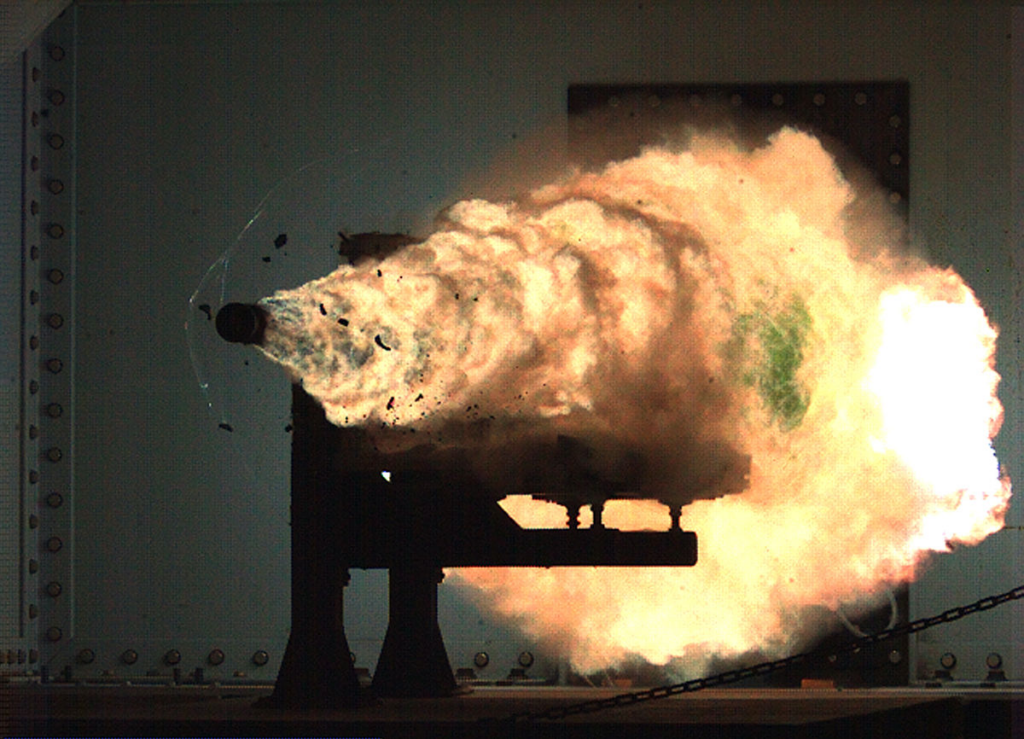
INTRODUCTION:
A railgun or rail gun, sometimes referred to as a rail cannon, is a linear motor device, typically designed as a weapon, that uses electromagnetic force to launch high-velocity projectiles. The projectile normally does not contain explosives, instead relying on the projectile’s high kinetic energy to inflict damage. The railgun uses a pair of parallel rail-shaped conductors (simply called rails), along which a sliding projectile called an armature is accelerated by the electromagnetic effects of a current that flows down one rail, into the armature and then back along the other rail. It is based on principles similar to those of the homopolar motor.
Typically, the efficiency of converting electrical energy into kinetic energy is between 10% and 50% for large scale research guns. These railguns operate from a stored energy source, such as a capacitor, in the range of 400 kJ to 32 MJ.
WORKING:
- Two parallel conducting rails are connected to a power source
- A conductive armature slides between the rails
- A large current passes through one rail, into the armature, and then back along the other rail
- The current creates a magnetic field that accelerates the armature and projectile
ADVANTGES:
- Railguns can launch projectiles at higher speeds than traditional cannons
- They can deliver more kinetic energy to a target
- They have large firepower input and flexible combat use
DISADVANTAGES:
- The massive forces of firing can wear out the barrel after only a few shots.
- The rate of fire may be too low to be useful for missile defense.
- Cooling options are being explored.
APPLICATION:
Railguns have potential military applications. The U.S. Navy has continued to see the potential for railguns on its stealth warships. The Chinese are also getting closer to fielding a true railgun.

